AI Performance Analytics: Elevate Workforce Productivity & Engagement
Updated On: August 23, 2025 by Aaron Connolly
Understanding AI Performance Analytics
AI performance analytics blends artificial intelligence with data-driven measurement to track, evaluate, and improve performance across different systems and processes. By processing vast amounts of data in real time, these tools spot patterns that traditional methods usually miss.
Definition and Core Principles
AI performance analytics automatically collects, processes, and interprets performance data with artificial intelligence. Unlike manual tracking, this tech can handle thousands of data points at once.
The main idea here is continuous monitoring. AI systems watch metrics around the clock, no humans needed. They notice trends, weird spikes, and patterns that people might overlook for weeks.
Data accuracy really matters too. AI cuts down on human mistakes in data collection and analysis. It processes info the same way every time, so insights stay reliable.
Predictive capability gives AI analytics an edge over basic reporting. These systems don’t just tell us what already happened—they predict what’s coming next. That lets organizations get ahead of problems instead of just reacting.
Real-time processing means you can respond to changes right away. Instead of waiting days or weeks for reports, AI systems can send alerts minutes after something unusual pops up.
AI Versus Traditional Performance Analysis
Traditional performance analysis leans on manual data collection and human interpretation. Analysts spend ages gathering info from various sources and building reports.
Speed differences are honestly huge. Where old-school methods might take weeks to spot trends, AI systems can do similar analysis in just hours—or even minutes.
Scope limitations hold traditional approaches back. Human analysts can only handle so much data at once. AI systems look at performance across tons of dimensions and timeframes at the same time.
| Traditional Analysis | AI Performance Analytics |
|---|---|
| Manual data collection | Automated data gathering |
| Limited scope | Comprehensive coverage |
| Weekly/monthly reports | Real-time insights |
| Human interpretation only | Pattern recognition + human oversight |
| Reactive responses | Predictive alerts |
Accuracy improves because AI eliminates human bias and mistakes. Traditional analysis often reflects the analyst’s viewpoint or experience gaps.
Business Value and Impact
AI performance analytics brings real business value through better productivity and decision-making. Organizations often see 20-30% efficiency gains in the first year.
Cost reduction happens thanks to early problem detection. Instead of fixing big issues after they hurt performance, AI systems catch small problems before they grow. That saves a lot of money.
Data-driven insights take the guesswork out of planning. Performance management gets more precise when AI analysis backs it up. Teams can focus where they’ll have the most impact.
Competitive advantages show up in faster responses. While competitors wait on outdated reports, organizations with AI analytics can tweak strategies right away based on fresh data.
Employee productivity jumps when AI handles routine analysis. Staff get to work on more strategic stuff instead of just compiling data. This usually leads to better job satisfaction and higher retention.
Key Metrics and Performance Indicators
Measuring AI performance means tracking KPIs that match business goals and show real value. We look for metrics that highlight both technical performance and actual productivity boosts across teams.
Commonly Used KPIs in AI Performance Analytics
Accuracy and Quality Metrics sit at the heart of AI measurement. We track precision, recall, and F1-scores for classification tasks. These tell us how often our AI gets it right.
For language models, we check BLEU scores and perplexity ratings. Computer vision systems need mAP (mean Average Precision) and IoU (Intersection over Union) scores.
Performance Speed Metrics count too. We measure:
- Time to First Token (TTFT) – how quickly the AI starts responding
- End-to-end response time
- Throughput rates during busy times
| Metric Type | Key Indicators | Typical Targets |
|---|---|---|
| Accuracy | Precision, Recall, F1 | >90% for production |
| Speed | TTFT, Response time | <2 seconds TTFT |
| Cost | Cost per query, ROI | 20-30% cost reduction |
| User Experience | Task completion, Satisfaction | >85% completion rate |
Cost-Efficiency KPIs track the financial side. We monitor cost per query, infrastructure expenses, and ROI. These show if AI projects really pay off.
Goal Setting and Alignment
Effective goal-setting starts with linking AI metrics to business results. We set clear, understandable targets. For example, a customer service AI might aim to resolve tickets 30% faster.
Goal alignment pulls technical teams and business leaders together. We build dashboards that translate technical metrics into business-friendly language.
Setting realistic timeframes helps manage expectations. Early AI deployments usually show 10-15% productivity gains in three months. Bigger improvements tend to show up after six months of tuning.
We use SMART criteria—Specific, Measurable, Achievable, Relevant, and Time-bound—for AI goals. That keeps us away from fuzzy objectives like “make AI better.”
Regular reviews keep goals current. As markets and user needs shift, we adjust targets each quarter based on what’s actually happening.
Measuring Productivity Gains
Employee productivity gains often make the strongest case for AI. We track time savings, task completion rates, and quality bumps across different roles.
Content teams using AI writing tools usually finish drafts 40-50% faster. Customer support teams handle 25-35% more tickets per hour. Sales teams can generate 30% more qualified leads with AI’s help.
We measure both direct and indirect productivity wins. Direct gains mean faster task completion. Indirect benefits include better job satisfaction and less stress from repetitive work.
Before and after comparisons show productivity changes best. We set baseline measurements before rolling out AI, then track progress over time.
Quality metrics help us make sure faster work doesn’t mean sloppier results. We watch error rates, customer satisfaction, and revision needs to keep standards high.
Human-AI collaboration metrics reveal team adaptation. Strong implementations see over 80% employee adoption in the first quarter.
Data Collection and Integration
Getting the right performance data is crucial for making AI analytics work well. We have to pull info from many sources and connect it all so AI can spot patterns and give us insights about how esports teams and players perform.
Sources of Performance Data
In-game metrics are the backbone of esports performance data. We grab kill/death ratios, accuracy percentages, and objective completions straight from game servers.
Match statistics give more detail. We look at damage per round, headshot percentages, and movement data to see how players use the map.
Tournament platforms like FACEIT and ESEA track performance across competitive matches automatically. These systems record everything from reaction times to economy management in games like CS.
Team communication data comes from voice chat analysis during scrims and matches. We measure callout frequency and response times to see how well teams coordinate (team coordination).
Biometric data adds another angle. Heart rate monitors and eye-tracking devices show stress and focus during big moments.
Training session records track progress over time. This covers aim training scores, strategy practice, and individual skill development.
Techniques for Effective Data Collection
Automated data capture saves time and wipes out manual errors. APIs connect straight to gaming platforms for real-time stats, with no human input needed.
We check data quality at several points. Right after collection, we validate data to catch mistakes or missing info.
Sampling strategies help us collect enough data without drowning in it. For example, we might grab detailed stats every 30 seconds during matches but only hourly during practice.
Standardising data across games and platforms is a must. A unified format lets us compare performance between different esports titles.
Privacy compliance keeps player info safe. We anonymise data and follow GDPR when collecting from UK and EU players.
Real-time processing lets coaches see performance indicators live during matches. They can adjust strategies on the fly.
Integration with HR Systems
Player management platforms tie performance data to contracts and team rosters. Organizations can track which players hit their targets.
Automated reporting cuts down on admin work. The system creates weekly performance summaries for managers, no manual compiling needed.
Workflow integration smooths out HR processes. Performance reviews automatically include stats and improvement trends from AI analysis.
Contract management systems use performance data for renewal decisions. Teams can see objectively if players meet their contract terms.
Scheduling tools use training data to fine-tune practice sessions. The system suggests focus areas based on gaps the AI spots.
Payroll systems can add performance bonuses automatically. When players hit certain AI-tracked targets, the system updates compensation right away.
AI Tools and Platforms
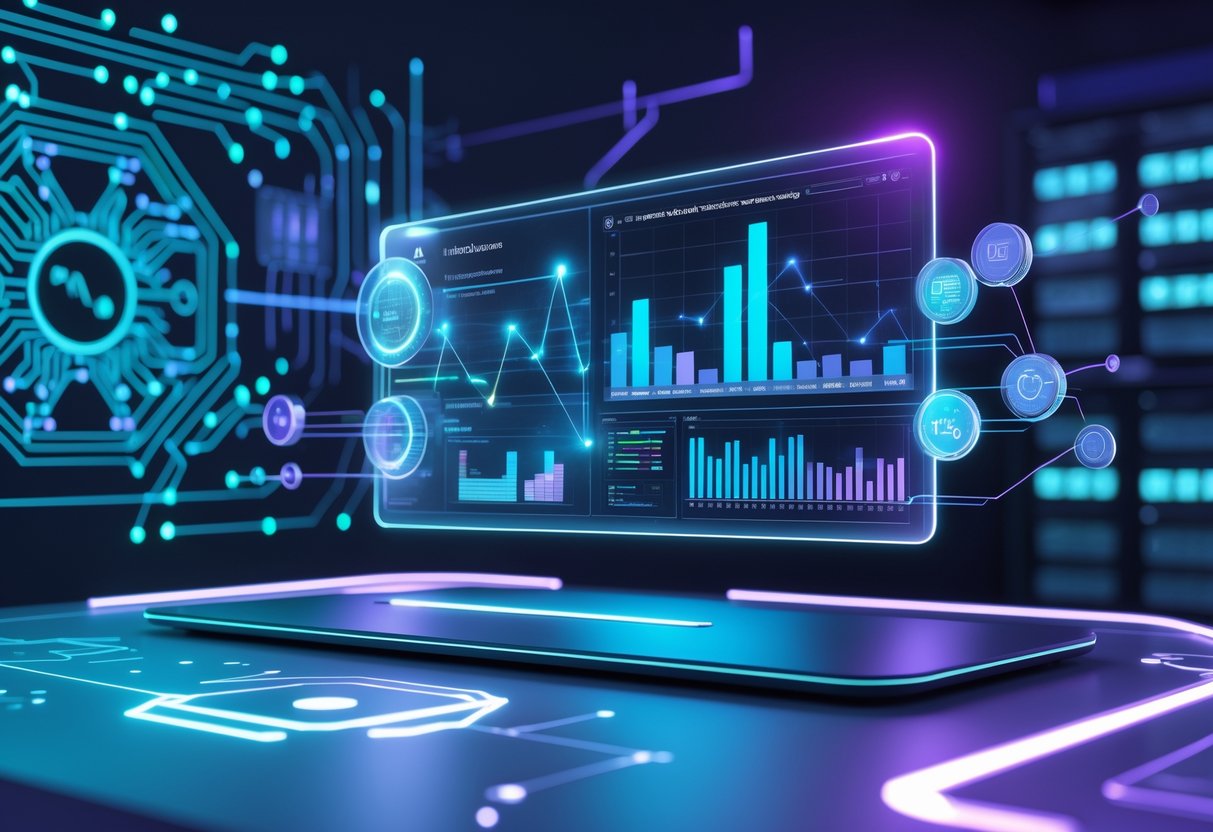
The world of AI performance analytics includes both big enterprise solutions and niche platforms for different business needs. Picking the right tool depends on your technical requirements, budget, and how well it integrates with what you’ve already got.
Popular Solutions and Vendors
A handful of top platforms really stand out in AI performance analytics. Each one brings something different to the table.
Enterprise-Grade Platforms
Workday leads in HR analytics with strong AI-driven performance tracking. It pulls together workforce data across hiring, reviews, and development.
BambooHR focuses on smaller businesses with easy dashboards and predictive analytics. It’s great for spotting performance trends and retention risks.
Specialised Performance Tools
Lattice combines performance management with AI insights for goal tracking and feedback. Teams can catch performance issues before they turn into problems.
15Five uses AI to analyse weekly check-ins and flag shifts in team sentiment. Natural language processing highlights potential trouble spots.
Culture Amp zeroes in on employee engagement analytics. Its AI finds performance drivers using survey data and feedback.
Comprehensive Solutions
ClearCompany covers full talent management with AI-powered performance predictions. It tracks hiring success and employee growth.
Betterworks keeps everyone aligned on goals, using AI to connect individual performance with business results.
| Platform | Best For | Key AI Features |
|---|---|---|
| Workday | Large enterprises | Predictive workforce analytics |
| Lattice | Mid-sized companies | Performance pattern recognition |
| 15Five | Team communication | Sentiment analysis |
| Culture Amp | Employee engagement | Survey data insights |
Selection Criteria for AI Tools
Picking the right AI performance analytics tool takes some thought.
Technical Requirements
Data integration is key. Your platform needs to connect with your HR systems, project management tools, and communication apps.
Model transparency helps build trust. Look for tools that explain how they make recommendations.
Budget Considerations
Pricing varies a lot. Some platforms charge per employee each month, others use a flat enterprise rate.
Implementation often costs more than just the software. Remember to factor in training, data migration, and customisation.
User Experience
Non-technical managers need simple interfaces. The best tools give insights without needing a data science degree.
Mobile access matters too. Managers can check performance data on the go, which really helps remote teams.
Scalability
Think about future growth. A tool that works for 50 people might struggle with 500.
Integration Challenges
Connecting AI analytics platforms to your existing systems isn’t always smooth.
Data Quality Issues
Inconsistent data formats mess with accuracy. Different sources might use different scales or definitions.
Missing historical data makes AI models less effective. New rollouts often lack the depth needed for strong predictions.
Technical Barriers
APIs sometimes limit data sharing between platforms. Older HR systems might need pricey middleware to connect with modern AI tools.
Real-time syncing can be tough. Sometimes performance updates lag behind actual events, making AI insights less useful.
Organisational Resistance
Managers may not trust AI recommendations right away. Rolling out gradually and explaining clearly helps build confidence.
Privacy worries can slow down employee buy-in. Open communication about data use helps prevent pushback on AI monitoring.
Quick win: Start with one team or department to try AI analytics before rolling it out everywhere.
Training needs depend on the platform’s complexity. Plan time for managers to learn new interfaces and how to read the results.
Real-Time Feedback and Continuous Improvement
AI transforms performance analytics by moving away from annual reviews and toward instant, always-on feedback. These new platforms lean on machine learning to spot patterns in real time and push out personalised insights that can actually help people improve right away.
The Role of Real-Time Feedback
Real-time feedback is seriously changing how companies think about employee performance. Instead of waiting for those dreaded yearly reviews, managers and employees get input when it actually matters.
AI-powered systems jump in with feedback right after big moments—like when someone finishes a project or wraps up a client call. Mesh.ai saw feedback exchanges jump 138% by nudging managers with automated prompts at just the right times.
These tools keep an eye on performance data all the time, not just during scheduled reviews. Employees can tweak their habits immediately, rather than learning about problems months later.
Quick win: LivePerson claims their automated analysis and summaries cut review times by 50-75%.
Real-time feedback grabs details while they’re still fresh. When feedback lands close to the actual event, it’s way more specific and less fuzzy than something based on old memories.
The technology tracks a bunch of performance indicators at once. It watches productivity, collaboration, and goal progress—no need for managers to chase down data manually.
Continuous Feedback Mechanisms
Continuous feedback tools use several AI tricks to keep tabs on performance. Natural language processing digs into written conversations, looking for tone and main themes in how people interact.
Machine learning picks up on patterns in the numbers that humans might not catch. It might spot a drop in engagement or a boost in productivity before anyone else even notices.
| AI Feature | Purpose | Business Impact |
|---|---|---|
| Automated alerts | Flag performance changes | Early intervention |
| Sentiment analysis | Monitor employee mood | Prevent turnover |
| Pattern recognition | Spot performance trends | Predict outcomes |
| Personalised insights | Tailor feedback content | Increase relevance |
When these systems plug into existing HR platforms, data flows smoothly. Performance insights just show up alongside other employee info, so there’s no need to log into a bunch of different apps.
Warning: Make sure you pick platforms that follow data privacy rules and keep employee info safe.
Predictive analytics let managers see trouble coming before it hits. Tools like 15Five link feedback trends straight to helpful training resources.
Promoting Continuous Improvement
Continuous improvement only happens when feedback turns into real action. AI systems suggest development moves based on what each person actually needs, not just generic advice.
Platforms like Engagedly mix 360-degree feedback with coaching suggestions. Employees get clear guidance instead of vague “try harder” comments.
The tech tracks progress on specific skills over time. Managers can tell which training actually helps and which stuff just wastes everyone’s time.
Performance analytics spot skill gaps and point to training before things go off the rails. This approach stops problems before they even start.
Data-driven insights show employees where they shine and where to focus next. No more guessing about which skills to work on—recommendations come straight from their own results.
Machine learning even predicts who’s ready for big goals or new roles. Managers can make smarter calls about promotions and project assignments.
With this constant loop of feedback and adjustment, improvement becomes part of the everyday routine—not just something you do once a year.
Performance Reviews and Evaluation
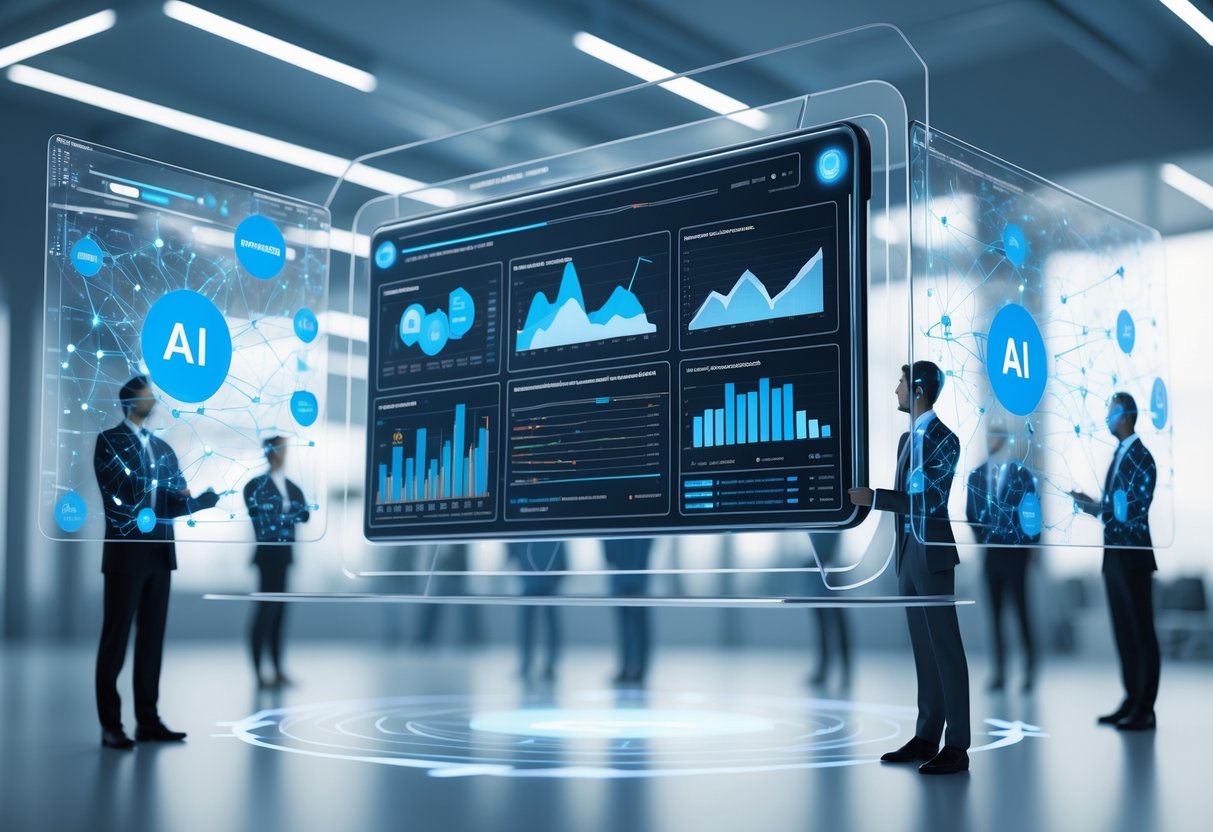
AI takes performance reviews and turns them into data-driven, real-time evaluations. These systems automate the review process, use real work patterns to provide objective assessments, and make collecting 360-degree feedback way easier.
Automating Performance Reviews
AI wipes out the manual drudgery that makes reviews such a pain. Instead of managers digging through spreadsheets and trying to remember what happened last quarter, AI grabs info from project tools, chat apps, and productivity trackers.
Key automation features include:
- Pulling data automatically from different work platforms
- Creating summaries based on actual performance numbers
- Sending reminders for feedback deadlines
- Building templates for consistent review formats
Managers save a ton of time. What used to take 3-4 hours per review now takes maybe 30-45 minutes.
AI keeps tracking progress in the background, not just during review season. No more scrambling to recall wins or piecing together half-remembered notes.
Objective Evaluation with AI
Traditional reviews often lean on recent events or personal bias, but AI cuts through that by crunching months of actual work data.
AI creates objectivity through:
- Analysing performance patterns over long stretches
- Tracking goal completion with real metrics
- Measuring collaboration through team communication tools
- Scoring quality from client feedback and project outcomes
For example, AI might notice that Sarah finishes projects 15% early and keeps quality high, while Tom stands out for teamwork based on peer reviews.
Common bias reduction:
- Recency bias: AI treats all time periods equally
- Halo effect: Different metrics for different skills
- Attribution errors: Focus on individual versus team results
With this kind of data, reviews become real conversations about growth—not just opinions.
360-Degree Feedback
AI makes gathering feedback from managers, peers, direct reports, and clients much simpler. Old-school 360-degree reviews usually flop because they’re slow and messy to coordinate.
AI enhancement includes:
- Sending out feedback requests automatically
- Collecting and compiling anonymous responses
- Spotting patterns across feedback sources
- Flagging big differences between self and peer ratings
AI can tell when someone rates themselves way higher or lower than others do, which sparks useful conversations about self-awareness.
The system tracks feedback themes across reviewers. If several colleagues mention communication as a strength, AI highlights it for development opportunities.
Real-world application: Instead of HR chasing down feedback forms, AI handles the collection and gives managers organised, actionable insights for each review.
Predictive Analytics and Performance Trends
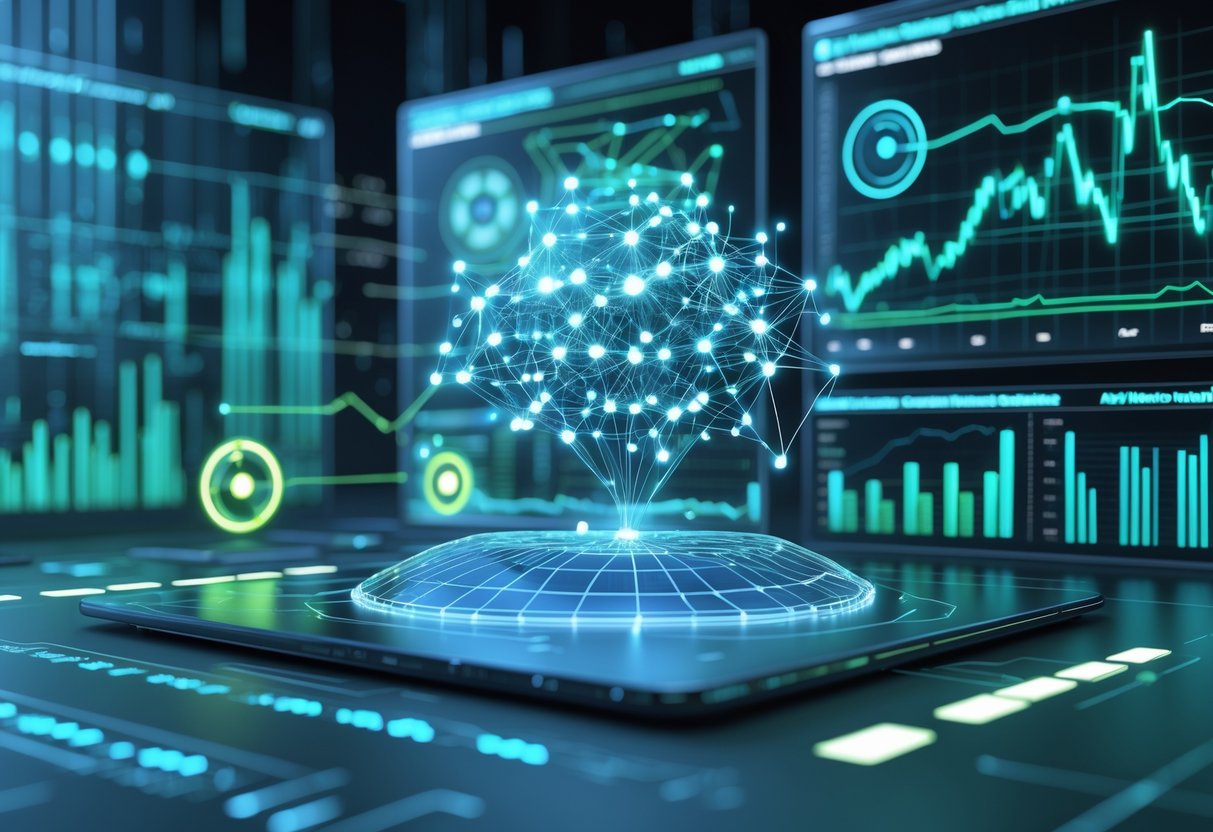
AI is changing how we predict and understand competitive gaming performance. By combining machine learning with live data, these systems forecast tournament results, spot emerging gameplay patterns, and help teams steer clear of costly mistakes.
Forecasting Performance Outcomes
Machine learning models now study thousands of match details to predict tournament outcomes with surprising accuracy. Top esports teams use these tools to forecast everything from a player’s next move to their odds of winning a championship.
We see analytics looking at things like:
- Player reaction times in different situations
- Team coordination when the pressure’s on
- Performance history against certain strategies
- Map-specific win rates and tactical habits
AI-driven insights help coaches make smarter calls about rosters and strategies. If data shows a player struggles on certain maps, the team can tweak their prep.
Pro teams typically run these predictions every week. The info points them toward practice areas that need work before big events.
Identifying Performance Trends
Performance trend analysis picks up on patterns that people might overlook. AI tracks small shifts in gameplay, team chemistry, and skill growth across time.
Predictive analytics catch meta changes before they’re obvious. These tools scan patch notes, early adopter strategies, and pro match data to guess what might take over next.
Common trend signals include:
- Dropping performance in certain game phases
- Better teamwork metrics
- Changes in weapon or character choices
- Communication efficiency tweaks during matches
Analysts use these trends to suggest development paths. If a skill is becoming more valuable, teams can train for it before everyone else.
Performance trends also warn about burnout. Analytics flag when players show signs of fatigue or dropping motivation, letting teams react before it’s too late.
Risk Assessment and Mitigation
AI performance tools shine at spotting risks before they hurt results. These systems watch for odd player behaviour, team chemistry issues, and outside factors that could impact performance.
Machine learning flags things like:
- Up-and-down practice sessions
- Communication breakdowns in scrims
- Physical health problems affecting play
- Signs of mental fatigue in decision speed
Teams use this data to adjust schedules, tweak roles, or bring in extra support. Risk mitigation becomes a real strategy, not just an afterthought.
AI-driven insights also look at outside risks. Weather, travel fatigue, or scheduling conflicts all go into the prediction mix.
Smart teams use this info to build backup plans. They prep alternate strategies or shift expectations based on what the data says.
The best teams treat risk assessment as something ongoing, not just a box to check once.
Personalised Development and Employee Engagement
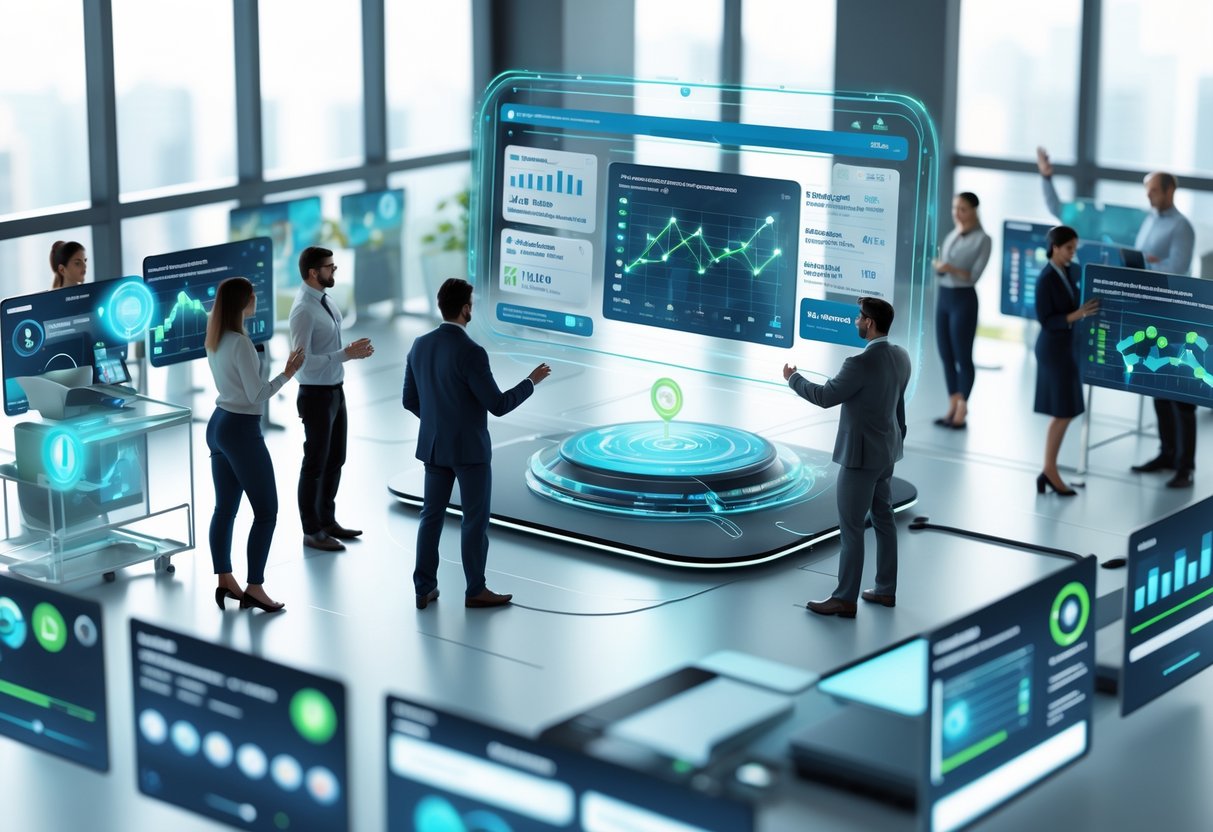
AI analytics creates unique growth paths for every team member and helps boost workplace satisfaction. These systems find skill gaps and match training to each person’s career goals.
Personalised Development Plans
AI changes how we build development plans by analysing individual performance and aspirations. The tech tracks strengths, weaknesses, and learning styles across lots of data points.
Modern systems check out past training, skill assessments, and reviews. They spot which development moves helped successful employees.
Key benefits include:
- Automated skill gap identification
- Custom learning paths tailored to job needs
- Real-time tracking and adjustments
- Career growth tips that fit company goals
AI tools can predict which training programmes will work for different personalities. They match delivery—visual, audio, hands-on—to what works best for each person.
The tech also links development plans to business goals. Training investments end up supporting company growth and helping employees move up.
Employee Engagement Strategies
AI-powered engagement tools use live data to keep people motivated. They watch communication, project participation, and feedback to measure engagement.
Predictive analytics flag people who might be losing steam or thinking about leaving. Managers can jump in early with support or new challenges.
Effective AI engagement includes:
- Personalised recognition based on what people actually like
- Custom goal-setting tied to personal drives
- Automated coaching tips for managers
- Quick pulse surveys with smart follow-ups
The tech figures out which rewards work best for different folks. Some love public praise, others want private feedback or career development.
AI even suggests the best project assignments based on skills and interests. Work stays challenging and fits each person’s growth plan.
Identifying Training Needs
AI is great at finding training needs before problems pop up. It analyses work patterns, errors, and productivity to spot skill gaps early.
Machine learning compares people’s performance to team and industry benchmarks. It flags where more training could help.
Training identification methods:
- Analysing performance trends over time
- Mapping skills against job needs
- Comparing peers for benchmarks
- Predicting future needs based on company direction
These systems track which training makes a real difference. That way, companies invest in what works and skip what doesn’t.
AI also watches industry trends and suggests new skills before they become urgent. It recommends training for upcoming tech or market shifts.
Regular checks of customer feedback and project results reveal hidden training needs. The tech connects performance patterns to knowledge gaps, so learning can actually fix them.
Ethical Considerations and Data Privacy
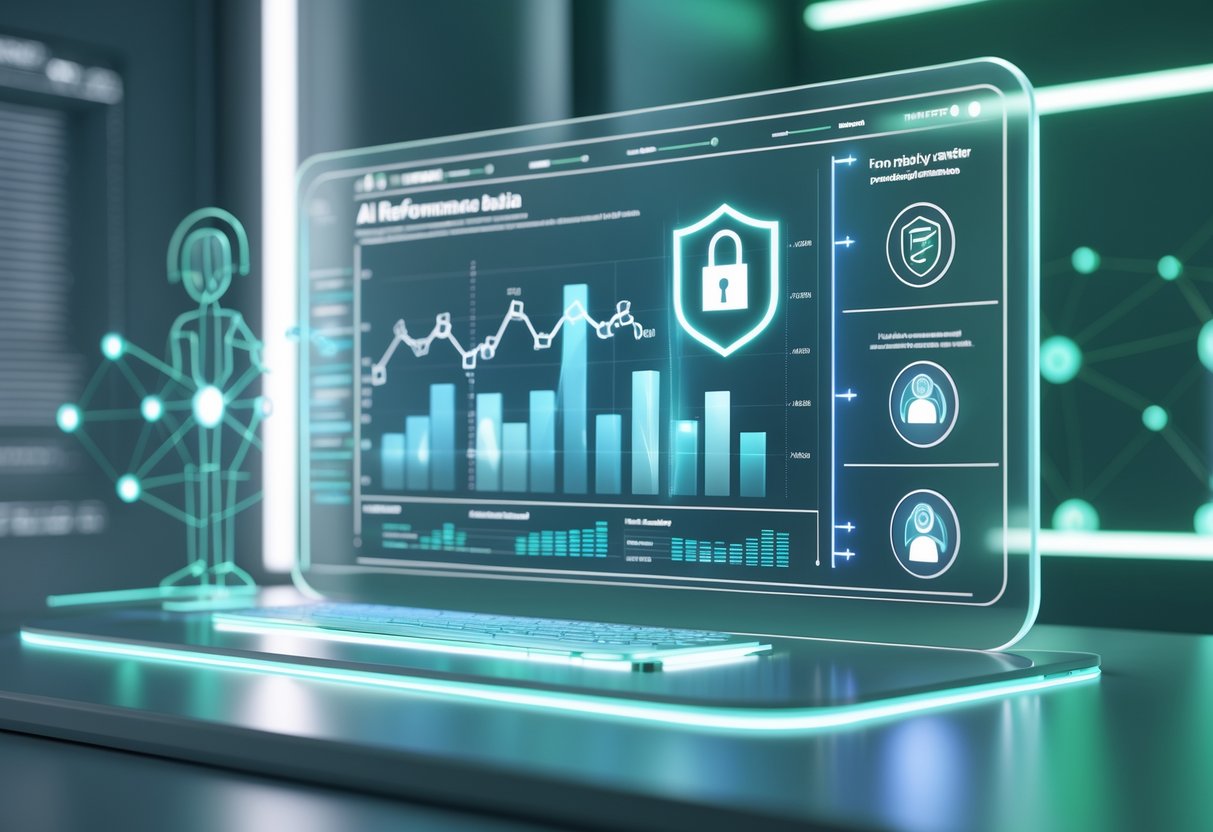
AI performance analytics gather huge amounts of player data, and that brings real responsibility for protecting privacy and making sure everyone gets fair treatment. If you want to build trust in esports, you absolutely need transparent practices and systems that treat all players fairly.
Ensuring Data Privacy
Protecting player data really begins with a clear consent process. Players should know exactly what data teams collect during matches, training, and streaming.
Essential privacy practices include:
- Asking for explicit permission before collecting any biometric data
- Encrypting all stored performance metrics
- Giving access only to authorised team members
- Letting players delete their data if they ask
Many esports organisations now follow data minimisation. They only collect what they actually need for analytics, not everything under the sun.
Storage limits matter. Teams should set retention periods for performance data—usually 12 to 24 months for active players. If analytics providers operate in the UK or EU, they must meet GDPR standards.
Players keep rights over their own performance data. They can check what’s collected, fix mistakes, and learn how that info shapes team decisions about their careers.
Addressing Bias in AI Systems
AI analytics can end up unfairly disadvantaging some players if the systems aren’t built carefully. Training data often mirrors existing biases in esports, like gender gaps or regional preferences.
Common bias sources include:
- Old data from mostly male tournaments
- Metrics based on narrow gaming cultures
- Models trained on mostly Western play styles
- Algorithms that punish unconventional strategies
Regular audits help teams spot these issues. Teams need to test their AI with lots of different player groups and play styles to keep things fair.
Ways to reduce bias:
- Use diverse datasets from different regions and backgrounds
- Test algorithms with multiple play styles
- Build diverse development teams
- Arrange regular bias tests with outside reviewers
Heads up: A lot of commercial AI analytics tools haven’t faced real bias testing. Teams should always ask for those reports before buying.
Transparency and Accountability
Players have a right to understand how AI systems judge their performance. Black-box algorithms that spit out unexplained scores just aren’t fair.
Transparency means actually explaining which metrics matter most and how they add up to a final rating. Players need to know if the system values individual skill, teamwork, or strategic smarts.
Key accountability steps:
- Publish the main factors in performance scoring
- Give players detailed score breakdowns
- Set up appeals for disputed AI results
- Bring in third-party audits for algorithm decisions
Teams should lay out clear lines of responsibility for AI-driven calls. Someone needs to answer when analytics affect roster moves, training priorities, or contracts.
Documentation really counts here. Teams should keep records that show how AI recommendations shaped real decisions about a player’s career or development.
Human oversight is still crucial. AI should help coaches and analysts—not replace their judgement—when decisions impact a player’s professional future.
Implementation Strategies for Organisations

Rolling out AI performance analytics takes real planning. You have to fit it into your current systems and team dynamics. The trick is starting small, easing people in, and sticking with methods that actually work.
Integrating AI into Existing Workflows
Start with what your team already does well. Most organisations try to change everything at once and end up overwhelmed.
Map current processes first. Check how your team manages data right now. What tools are in use? Where do things slow down? This gives a practical starting point.
Pick one department to begin. Choose a team that’s already comfortable with data. HR is often a good pick since they track clear metrics like hiring speed and employee satisfaction.
Connect AI tools to what you already use. There’s usually no need to reinvent the wheel—most software links to AI platforms with APIs.
Test with pilot projects. Choose tasks where mistakes won’t cause chaos. Good first steps include:
- Automating simple reports
- Predicting busy times for staffing
- Analysing customer feedback
Give your team time to learn new tools. No need to rush—most people need a couple of weeks to get used to new dashboards.
Set up feedback loops early on. Ask users what works and what doesn’t. This way, you catch problems before they grow.
Change Management and Adoption
People often worry about new tech making them obsolete or exposing gaps in their skills. The best way to handle this is to talk about it directly.
Tackle job security fears right away. Explain that AI takes care of the boring stuff so people can focus on more interesting work. Share real examples from similar companies.
Choose AI champions in each team. Pick folks who like new tech—they’ll support others when you’re not around.
Offer hands-on training. Don’t just send emails about new tools. Run workshops where people can try things out. Make these optional at first to reduce pressure.
Show quick wins. If someone saves two hours a week thanks to AI, spread the word. Success stories travel faster than memos.
Support different learning speeds. Some team members pick up new tech fast, others need more time. Plan for both.
HR teams get the most out of AI when they know why changes are happening. Make it clear how analytics will make their jobs easier, not harder.
Best Practices for Success
Some approaches just work better. These tips help you avoid the usual time-wasters and headaches.
Set realistic goals. AI won’t fix everything overnight. Expect three to six months before you see major improvements.
Keep an eye on results. Track things like:
- Hours saved each week
- Accuracy gains
- User satisfaction
- ROI on AI spending
Clean up your data first. Bad data leads to bad AI results. Take the time to tidy up databases before plugging in new tools. It takes longer than you’d think, but it’s worth it.
Write down what you learn. What worked? What flopped? Clear records help future projects move faster.
Schedule regular reviews. Meet monthly to talk about what’s working. Adjust automation as you learn more.
Plan for ongoing costs. AI tools need updates, training, and support. Budget for these from the start.
Keep security tight the whole way through. AI analytics often tap into sensitive business data. Work with IT to make sure access stays controlled and data stays protected.
Case Studies: Real-World Applications

Companies in all sorts of industries have changed the way they operate with AI performance analytics. The results? Better efficiency, sharper customer experience, and more growth. These examples show how data-driven insights can really give teams a competitive edge.
Transforming Performance Management
Modern organisations use AI analytics to overhaul how they track and boost workforce performance. These systems analyse employee productivity, spot training gaps, and even predict who might leave.
Manufacturing companies use AI to monitor production lines in real time. Workers get instant feedback on quality and safety. This cuts errors by 30-40% and usually improves job satisfaction.
Sales teams rely on AI dashboards to track conversion rates, customer interactions, and revenue. AI highlights top performers’ habits and helps create coaching plans for those who need support.
Call centres use AI to review conversation patterns and satisfaction scores. Managers can spot training needs right away, not just at the end of the month. Response times improve by 25% when staff get this kind of targeted feedback.
Enhancing Customer Satisfaction
AI performance analytics makes it easier for businesses to understand and respond to customer needs. These tools analyse feedback, predict service issues, and help teams optimise interactions.
Retailers track customer journeys across every touchpoint. AI finds friction points and suggests fixes. Customer satisfaction usually climbs 15-20% after rolling out these insights.
Streaming services use AI to study viewing patterns and improve recommendations. They also spot buffering issues and boost user engagement.
Banks and financial companies monitor transactions with AI to catch fraud and improve legitimate customer experiences. Response times drop sharply when AI helps route urgent queries to the right staff.
Driving Business Outcomes
Companies see real financial returns from AI analytics. These systems help teams use resources better, cut costs, and find new revenue streams.
Energy firms use AI to monitor equipment and predict when maintenance is needed. This helps avoid breakdowns and keeps assets running longer. Operational costs often fall by 20-30% with predictive maintenance.
Healthcare providers use analytics to smooth out patient flow, cut waiting times, and improve treatment outcomes. AI spots scheduling problems and suggests fixes that boost patient throughput by 15-25%.
E-commerce platforms analyse customer behaviour to fine-tune pricing and inventory. Revenue goes up when AI finds the best price points and predicts demand swings accurately.
Future Trends and Innovations in AI Performance Analytics
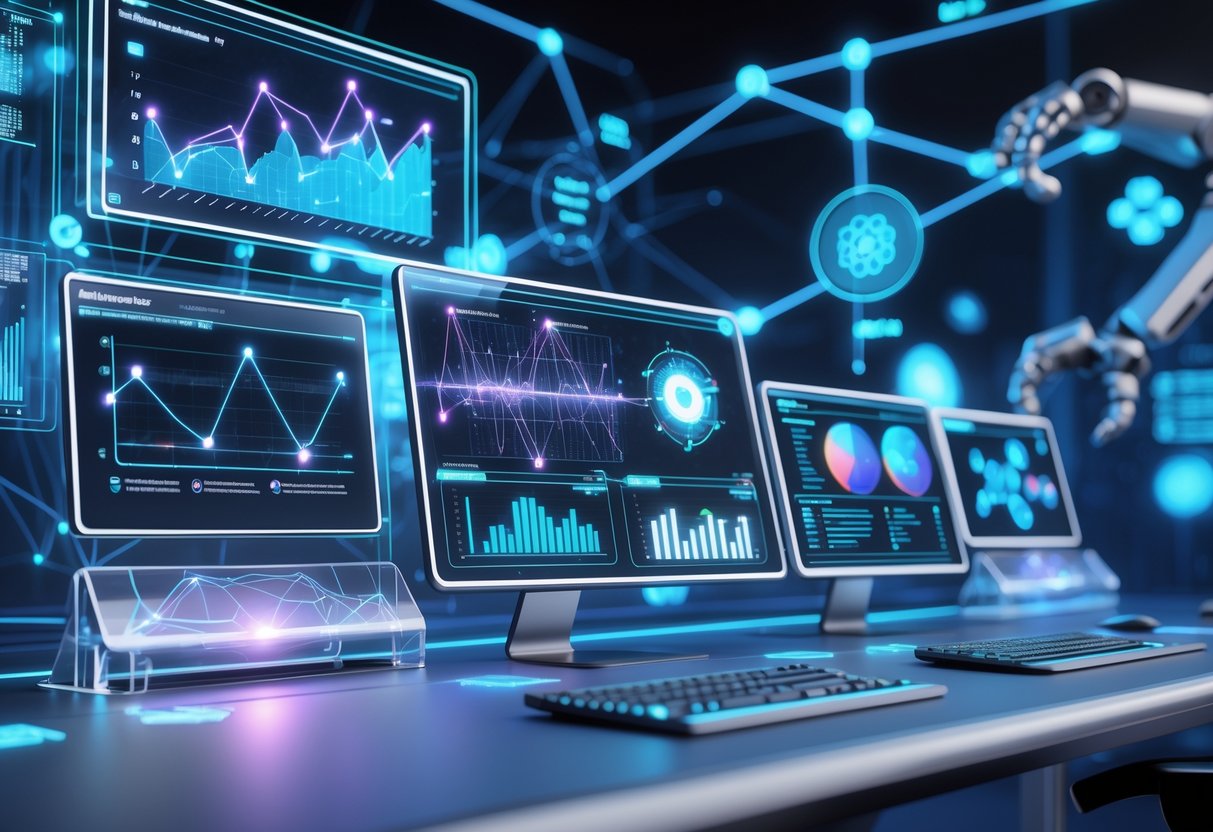
The AI world in performance analytics is moving fast. New tech is popping up that could totally change how we measure and improve performance. The latest innovations focus on making AI smarter, easier to use, and more connected with other systems.
Emerging Technologies and Capabilities
AI is now spotting performance issues more than 60 days ahead. That kind of early warning is pretty amazing.
Machine learning algorithms keep getting better. They notice work patterns humans might never catch. This helps teams predict who might leave or struggle to hit goals.
Natural language processing has come a long way. AI can now write development plans that actually make sense. These aren’t just copy-paste templates—they’re tailored for each person.
Real-time feedback systems are starting to replace old-school annual reviews. AI analyses communication, project results, and work habits nonstop. Managers get instant insights, not just yearly updates.
Dynamic goal optimisation is another big leap. AI changes objectives automatically when the market shifts or team capacity changes. Teams using this reach their targets 22% faster than those with static goals.
AI-driven evaluations now show a 33% drop in bias compared to the old methods. That’s a huge step toward fairer reviews.
Integration with Other HR Tools
AI performance analytics doesn’t work alone anymore. Now, it connects smoothly with bigger HR platforms.
Modern AI tools link up with recruitment, learning, and payroll systems. This gives a full picture of each employee’s journey—from hiring to development.
Cloud-based solutions hold 65% of the market now. Integration gets easier and more affordable, even for smaller companies. Teams can check performance data from anywhere.
AI taps into communication tools like Slack, Teams, and project platforms. It tracks productivity patterns without extra tracking software.
Performance management software is on track to hit £9.7 billion by 2032. That growth shows just how essential these systems are becoming.
Automated summaries now pull data from everywhere. Instead of managers spending hours on reviews, AI drafts them in seconds. This cuts manager workload by 25% and keeps things consistent.
The Evolving Role of AI in the Workplace
AI’s role is shifting from just collecting data to actually supporting smart decisions. We’re seeing AI that doesn’t just report on performance—it helps improve it.
Continuous feedback loops are the new normal. Instead of waiting for reviews, AI gives ongoing updates about how things are going. This helps managers and employees adjust right away.
Remote and hybrid teams benefit a lot here. With 24.3% of workers now working flexibly, AI tracks productivity across digital platforms without being a pain.
Gartner predicts AI agents will be the fastest-growing tech by 2025. These smart assistants will soon handle routine performance tasks automatically. They’ll set up check-ins, recommend training, and flag issues.
Hybrid approaches—where AI handles the data and humans focus on coaching—work best. It’s a good mix.
Teams using data-driven performance management are three times more likely to hit their business goals. That’s a strong case for making AI part of the core toolkit.
Human Resources Review: http://www.digitalhrtech.com/ai-performance-management-trends/
Frequently Asked Questions
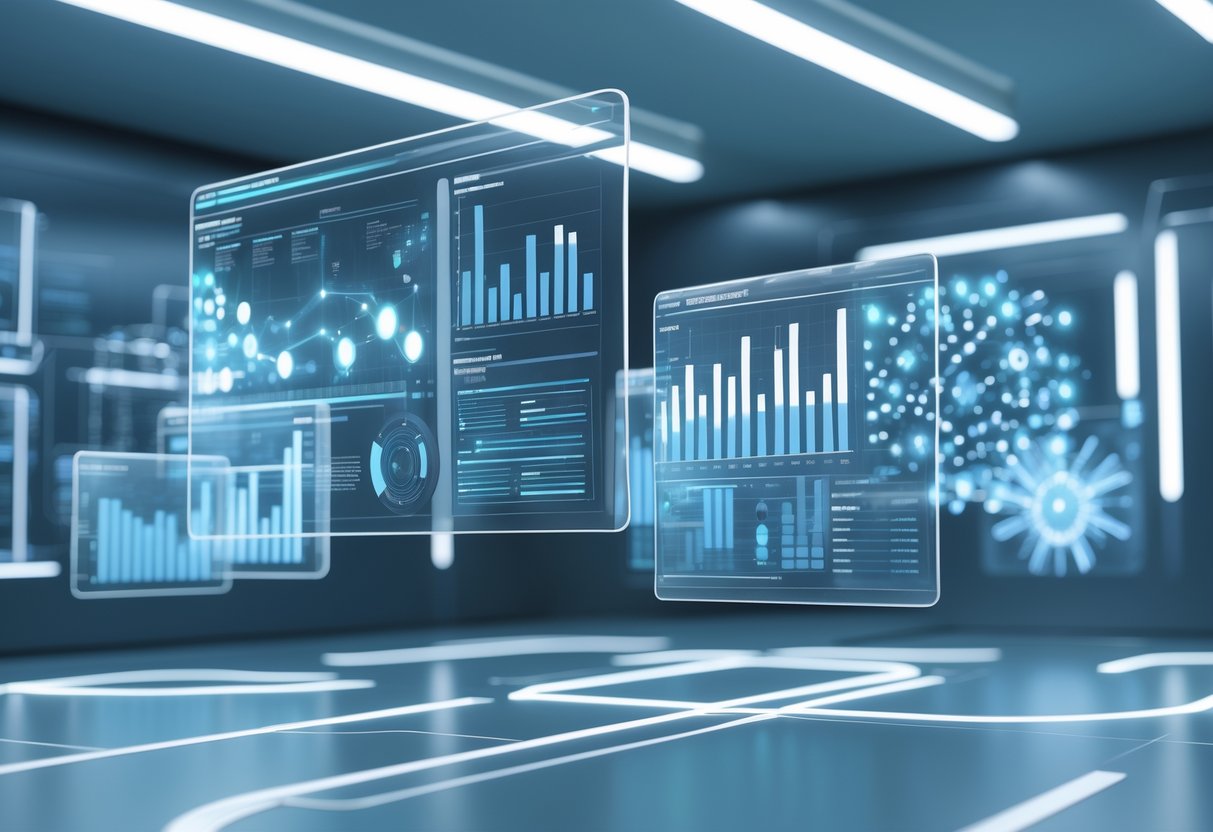
These FAQs cover the basics of AI performance analytics—from measurement tools and comparison methods to benchmarking standards and ways to boost performance.
What tools are available for measuring the performance of AI models?
Plenty of tools exist for measuring AI model performance at every stage of development. You’ll find specialized platforms like Weights & Biases, MLflow, and Neptune that let you track experiments and monitor model metrics live.
IBM AI Fairness 360 zooms in on bias detection for classification models. It spots unfair treatment across different demographic groups and even suggests algorithms to help fix those issues.
If you’re dealing with regression models, Fairlearn can help. It visualizes error patterns and applies fairness constraints while you train your models.
Google’s What-If Tool lets you interactively explore model behavior. You can tweak inputs and watch how predictions shift in various scenarios.
You also have Python libraries like scikit-learn, which offer basic metrics for accuracy, precision, and recall. For deep learning, TensorBoard makes it easy to see your training progress in real time.
How do you effectively compare different AI models?
Comparing AI models isn’t just about numbers—it’s about being systematic with both technical and business metrics. First, you’ll want to set up evaluation criteria that actually match your project’s goals.
For classification, direct metrics like F1 score, precision, and recall are your best bet. When you’re evaluating regression models, you’ll look at Root Mean Squared Error (RMSE) and Mean Absolute Error (MAE).
Cross-validation helps you compare models fairly. You split your data into training and testing sets the same way for each model.
Don’t forget the business side. You should measure how each model impacts customer satisfaction, efficiency, and cost savings.
It’s also important to check if models perform well on different kinds of data. Sometimes, a model that looks great on training data just can’t handle the messiness of real-world inputs.
What are some common benchmarks used for evaluating AI systems?
Industry benchmarks give everyone a common ground for measuring model performance. For natural language processing, GLUE and SuperGLUE test models on things like sentiment analysis and reading comprehension.
If you’re working in computer vision, ImageNet is the classic benchmark, with millions of labeled images across thousands of categories.
MLPerf benchmarks focus on how fast models train and run across various hardware setups. They’re super useful for comparing computational efficiency.
The COCO dataset is the go-to for object detection and image segmentation. Tons of computer vision researchers rely on it to validate their models.
Sometimes, though, you need something more tailored. Custom benchmarks can reflect the real-world conditions your models will actually face in production.
What metrics should one consider when analysing AI performance?
You really need to look at technical, business, and ethical metrics to get the full picture. For classification models, accuracy, precision, recall, and F1 score matter most.
Regression models call for metrics like RMSE, MAE, and R-squared values. These show how close your predictions get to the actual numbers.
Business metrics connect your models to real-world results. It’s worth tracking customer satisfaction, revenue impact, and improvements in operational efficiency.
Ethical metrics are crucial, too. Bias detection scores and fairness indices can highlight discrimination in your model’s decisions.
Model drift metrics help you spot when performance starts slipping over time. Changes in data can quietly erode accuracy if you’re not watching closely.
How can analytics enhance the performance of AI models?
Analytics can uncover bottlenecks and hint at where your AI systems need work. By watching monitoring data, you’ll catch when models start making bad predictions because input patterns changed.
Real-time analytics let you catch problems before users notice. Automated alerts warn teams when accuracy drops below what you’re comfortable with.
A/B testing frameworks make it possible to compare model versions in production. You can measure which updates really move the needle for users and business goals.
Feature importance analysis shows which inputs matter most for predictions. This helps you focus data collection and maybe even simplify your models without losing accuracy.
Bringing in user feedback keeps the improvement loop going. Analytics platforms that blend technical metrics with real user satisfaction can guide smarter model updates.
Could you explain the role of detectors in AI benchmarking?
Detectors play a pretty important part in AI benchmarking. They spot issues that standard metrics often overlook.
Bias detectors, for example, look for unfair treatment across different demographic groups or sensitive traits. You really don’t want a model that’s quietly discriminating, right?
Drift detectors keep an eye on how data changes over time. When input patterns start shifting, they let teams know before the model’s reliability takes a hit.
Anomaly detectors jump in to flag weird predictions or odd input patterns. These are handy for catching those rare cases when models just act… off.
Performance detectors focus on how efficiently a model runs. They measure things like inference time and memory use, making sure the model stays snappy enough for production.
Quality detectors check if the model’s output stays consistent and reliable in different situations. For generative AI, they’re especially useful for spotting hallucinations or responses that just aren’t true.
Sometimes, automated monitoring isn’t enough. Human-in-the-loop detectors bring in expert review, catching subtle problems that technical tools might miss.

